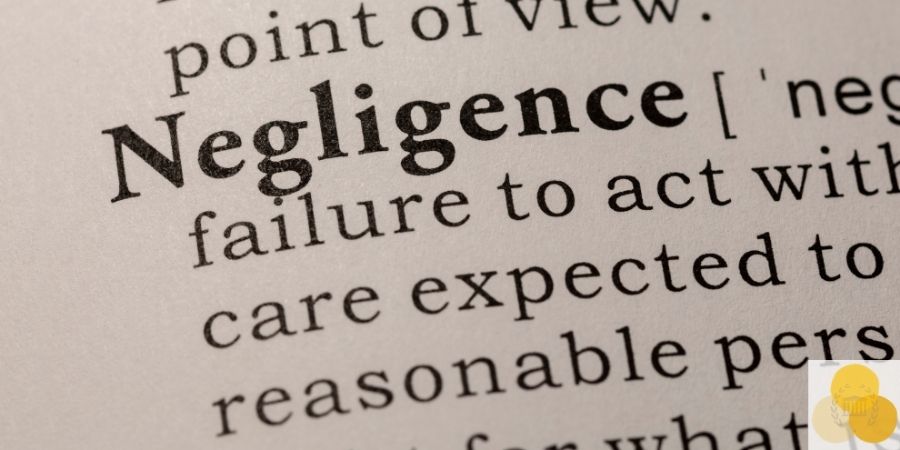Negligence: Legal Nuances and Practical Pointers
We’ve all had our share of legal troubles (small or big) and life is full of surprises, so there’s no ruling out days we find ourselves in a legal problem. Personal injury lawsuits (such as car accidents, medical negligence, slip and fall cases, etc.) are legal claims involving injury to the body, mind, or emotions. Interestingly, the majority of all personal injury cases involve car accidents. Additionally, only 4% of all personal injury cases go to trial, with most of them being settled out of court.
Personal injuries can arise in various ways or situations, ranging from a slip and fall to product liability and chemical exposure, which makes this area of law very complicated.
Determining Negligence
When the injured party decides to seek relief (i.e. monetary compensation) from the party which caused the injury, a complex process of determining fault ensues. Determining fault becomes essential, as it helps in affixing liability on one or more persons and specifying the amount of payable damages.
Unfortunately, there is no one rule applicable to all cases of personal injury across the United States – every state has its own set of rules to determine fault. Generally speaking, the states’ liability regimes can be put into two broad buckets:
Two Types of Negligence
1) contributory negligence and
2) comparative negligence

1. Contributory Negligence
Contributory negligence means that the only way you can find the defendant guilty is if they are the only if the plaintiff wasn’t to blame at all. Mr. Williams’ speeding car rams into Mr. Smith’s car, causing him serious injuries. Here, Mr. Williams will be liable only if no fault can be attributed to Mr. Smith. However, if for whatever reason, Mr. Smith contributed in the crash in some way, Mr. Williams won’t be liable for the damages. Seems harsh? It is.
States using this principle:
Alabama, District of Columbia, Maryland, North Carolina, and Virginia.
2. Comparative Negligence
Think of an accident where both parties were somewhat responsible. Ms Johnson’s car makes a turn without signalling and collides with Mr. White’s car which is way over the speeding limit, seriously damaging Mr. White. Here, both parties are at fault. Now fault will be attributed to each of the parties depending on the extent of their responsibility. Most of the states (46) follow the comparative negligence model (and its variants) to determine fault.
The comparative negligence regime has three categories, as stated below:
A. Pure Comparative Negligence
This regime requires allotting a percentage of fault to each party and then dividing the damages proportionately. So if the jury, find Ms. Johnson to be majorly at fault, say 70%, and Mr. White to be 30% fault, damages will be payable by Ms. Johnson in the same proportion.
States using this principle: Alaska, Arizona, California, Florida, Kentucky, Louisiana, Mississippi, Missouri, New Mexico, New York, Rhode Island and Washington.
B. Modified Comparative Negligence (50% rule)
Around 12 states follow what is known as the 50% rule. The rule prescribes that the injured party cannot get damages if his fault is 50% or more. Implying that, if the injured party’s fault is less than 49% (or 49% itself), he can recover, after offsetting (i.e. reducing) that percentage for which he is responsible.
States using this principle: Arkansas, Colorado, Georgia, Idaho, Kansas, Maine, Nebraska, North Dakota, Tennessee, Utah and West Virginia.
C. Modified Comparative Negligence (51% rule)
A larger portion of states (21 states) follows the 51% rule. This rule bars the injured party from getting any compensation if he is 51% or more at fault. Implying that he can recover if his fault is 50% or less (again, the recovery of damages would be reduced by his degree of fault).
States using this principle: Connecticut, Delaware, Hawaii, Illinois, Indiana, Iowa, Massachusetts, Michigan, Minnesota, Montana, Nevada, New Hampshire, New Jersey, Ohio, Oklahoma, Oregon, Pennsylvania, South Carolina, Texas, Vermont, Wisconsin, and Wyoming.
Determining fault has 2 parts to it – the first is the rules which govern fault determination (captured above) and the second is the actual practices used to prove fault on the part of a person. Fault can be proved by testimonies of eyewitnesses, video recordings, photographs, police reports, etc. Therefore, these aspects need to be kept an eye on to make a good case.
Conclusion
More often than not, determining fault can be a complex process and an expensive one. Depending on the facts (i.e. are you the injured party or the party at fault?), certain steps can be taken to make a solid legal case or offer a defense. Prompt and effective legal advice is a good starting point, for the same.






